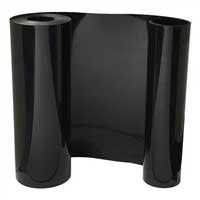Introduction Root barriers are an essential tool for any property owner looking to protect their landscape and infrastructure from invasive tree roots. Whether you’re dealing with a small garden or a large commercial property, understanding the importance and application of root barriers can save you time, money, and a lot of headaches.
What is a Root Barrier? A root barrier is a physical barrier installed underground to prevent tree roots from spreading into unwanted areas. Made from durable materials like polyethylene or polypropylene, these barriers are designed to redirect root growth and protect your property from damage caused by invasive roots.
Why You Need a Root Barrier
- Prevent Structural Damage: Tree roots can cause significant damage to foundations, driveways, sidewalks, and other structures. A root barrier helps to avoid costly repairs by keeping roots at bay.
- Protect Plumbing Systems: Roots often seek out water sources, which can lead them to invade and damage plumbing systems. Installing a root barrier ensures your pipes remain intact and functional.
- Maintain Landscape Integrity: Root barriers help to maintain the aesthetic and structural integrity of your landscape by preventing roots from disrupting garden beds, lawns, and other planting areas.
Types of Root Barriers
- Physical Barriers: These are typically made from high-density polyethylene or similar materials. They are installed vertically in the ground and provide a solid wall that roots cannot penetrate.
- Chemical Barriers: These involve the use of herbicides to inhibit root growth in specific areas. While effective, they require careful handling and application.
- Bio-Barriers: Made from natural materials, these barriers are designed to decompose over time, releasing substances that inhibit root growth.
Installation Tips
- Plan Ahead: Identify the areas where root barriers are needed and plan the installation process accordingly.
- Dig Deep: Ensure the barrier is installed deep enough to block roots from going underneath. Typically, a depth of 18-24 inches is recommended.
- Overlap Sections: If using multiple sections of root barrier, make sure to overlap them by at least 12 inches to prevent roots from finding their way through gaps.
Conclusion Root barriers are a smart investment for anyone looking to protect their property from the damaging effects of invasive tree roots. By understanding the different types of barriers and their benefits, you can make an informed decision that will safeguard your landscape and structures for years to come.
